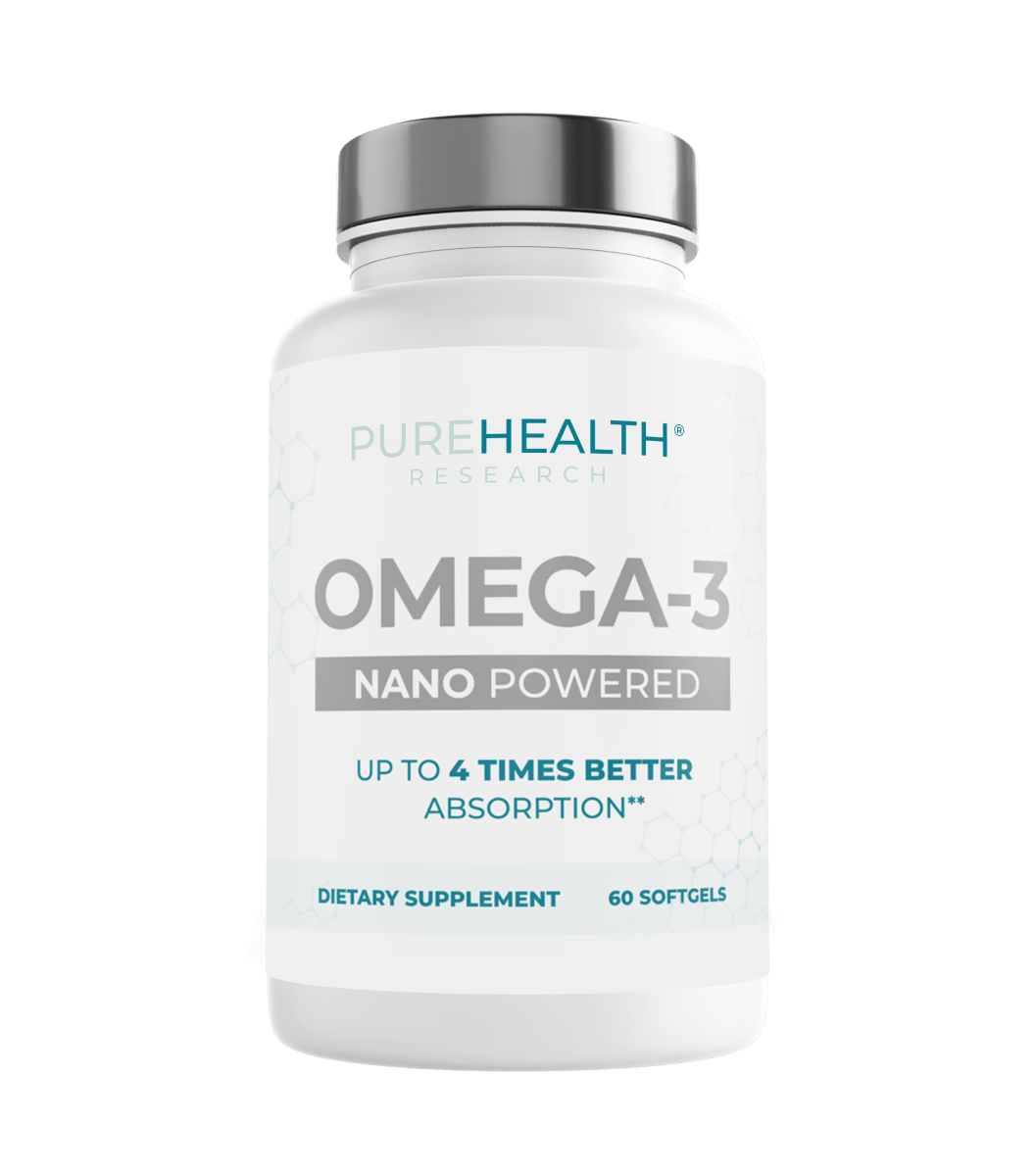How to Normalize an Overactive Immune System
Looking for ways to balance your immune system? Explore how to normalize an overactive immune system with easy, actionable strategies.


An overactive immune system can significantly impact your health, causing a range of symptoms from unexplained fatigue to persistent allergies. If you’re wondering how to normalize an overactive immune system, you’re not alone. Many people struggle with this condition, which occurs when the body’s defense mechanisms work too hard, even without real threats.
The good news is that normalizing immune system naturally is possible, often through lifestyle changes. This guide will explore the causes, symptoms, and practical approaches to help you regain control over your health.
What Is an Overactive Immune System?
Your immune system is your body’s defense mechanism against harmful invaders like viruses and bacteria. However, sometimes this system can become overactive, leading to a range of health problems.
An overactive immune system occurs when your body’s defense mechanisms work too hard, even when there’s no real threat present. This can result in your immune system mistakenly attacking your own healthy cells and tissues.
One of the most common indicators of an overactive immune system is being allergic to harmless things. Some of the most prevalent allergies is to peanuts, and peanut butter can also trigger allergic reactions in sensitive individuals. These reactions can range from mild skin irritations to severe anaphylaxis, depending on the person, that’s why some people can think that peanut butter can cause acne. Additionally, skin allergies such as eczema and respiratory issues like asthma can also be linked to an overactive immune response.
Want to learn more about the immune system? Read our article that covers seven facts about the immune system!
Symptoms of an Overactive Immune System
Common signs that you may have an overactive immune system include:
- Frequent allergies
- Autoimmune disorders
- Chronic fatigue
- Unexplained weight changes
- Hair loss
- Dry skin
- Joint pain
- Difficulty recovering from infections
Causes of an Overactive Immune System
The exact cause of an overactive immune system isn’t always clear. However, several factors may contribute:
- Genetic predisposition
- Environmental triggers
- Lifestyle factors
- Chronic stress
How to Normalize an Overactive Immune System
While you can’t always prevent an overactive immune system, there are several ways to manage and normalize it:
1. Follow an Anti-inflammatory Diet
What you eat can significantly impact your immune function. If you want to understand how normalize an overactive immune system naturally, consider:
- Increasing your intake of fruits and vegetables
- Consuming more whole grains and lean proteins
- Including healthy fats in your diet
- Limiting processed foods, sugar, and saturated fats

This dietary approach not only helps in managing inflammation but also supports overall immune function and reduces the risk of chronic diseases. The evidence suggests that making these dietary changes can lead to significant health benefits and improved quality of life
2. Exercise Regularly
Regular exercise is a cornerstone of a healthy lifestyle and plays a crucial role in reducing inflammation and enhancing immune function. Below are recommended exercise durations and types.
- 150 minutes of moderate-intensity exercise per week, or
- 75 minutes of vigorous-intensity exercise per week

Options include yoga, cycling, swimming, or resistance training.
3. Manage Stress
Chronic stress can negatively impact your immune system. Try these stress-management techniques to help normalize an overactive immune system:
- Meditation
- Journaling
- Yoga
- Ensuring adequate sleep (aim for 7-9 hours per night)

By incorporating these stress-management techniques into your routine, you can help mitigate the negative effects of chronic stress on your immune system and overall health.
4. Consider Supplements
Certain supplements may help support immune function and provide insights into how to normalize an overactive immune system. Always consult with a healthcare provider before starting any new supplement regimen. Our top picks are:
- Omega-3 fatty acids
- Vitamin D
- Zinc
Omega-3s have anti-inflammatory properties that may help modulate immune function. While you can get omega-3s from foods like fatty fish, some people turn to supplements for a more concentrated dose.
Often called the “sunshine vitamin,” Vitamin D plays a crucial role in immune function. Some studies suggest that Vitamin D deficiency may be linked to autoimmune disorders.
Zinc is essential for the development and function of immune cells. It may help regulate the immune response and reduce inflammation.
Creatine, commonly known for its ability to boost muscle strength and performance, can also play a role in supporting overall wellness by providing additional energy to cells. However, some individuals may wonder, does creatine cause acne? While there’s no strong evidence directly linking creatine to acne, factors like hormonal changes or increased sweating during workouts could potentially contribute to breakouts for some individuals.
One innovative option in this category is Nano Powered Omega 3. This supplement uses nanotechnology to break down larger omega-3 molecules into smaller particles, potentially increasing absorption by the body. It contains:
- Omega-3 DHA
- Omega-3 EPA
- Astaxanthin, a potent antioxidant
The combination of these ingredients may help support overall health and potentially assist in calming an overactive immune response.
Remember, while supplements can be helpful, they’re not a substitute for a balanced diet and healthy lifestyle. It’s also important to note that the effectiveness of supplements for immune system can vary from person to person. What works well for one individual may not have the same effect on another.
5. Explore Therapies
Another good way to normalize an out-of-control immune system is by trying out therapies:
- Intravenous immunoglobulin (IVIG) therapy
- Dry skin brushing
- Therapeutic massage

Bonus Tips: Taking antibiotics can also represent a struggle. Wondering how to rebuild your immune system after antibiotics? If so, below are a series of lifestyle-related steps you can follow in our linked article.
Two Tasty Autoimmune Diet Recipes
A proper diet is an essential strategy for managing an overactive immune system. Here are a few easy dishes that may be helpful.
Recipe 1: Crispy Salmon Kale Salad With Tahini Dressing
This nutrient-packed salad combines crispy salmon, hearty kale, and a tangy tahini dressing for a delicious and healthy meal. Rich in omega-3 fatty acids, fiber, and vitamins, this recipe is perfect for supporting overall health, including immune function.

Ingredients
For the dressing:
- 3-4 small limes, juiced
- 1/2 teaspoon chili pepper flakes
- 1/2 cup tahini
- 1 tablespoon maple syrup
- Water (as needed for consistency)
For the salmon:
- 5 lbs. skinned salmon
- 1 tablespoon olive oil
- Spices to taste:
- Chipotle powder
- Onion powder
- Dried oregano
- Garlic powder
- Salt
For the salad:
- 10 oz. chopped kale
- 1 pomegranate, seeds removed
- 2 avocados, sliced
- 1/2 cup chopped pistachios
- 1 pint cherry tomatoes, sliced
- 1 cup shaved fontina cheese (optional)
Instructions
Step 1: Prepare the dressing
- In a sealable container, whisk together lime juice, chili pepper flakes, and tahini until smooth.
- Add small amounts of water until you reach your desired consistency.
- Stir in maple syrup, adjusting to taste.
- Set aside.
Step 2: Cook the salmon
- Pat the salmon dry with paper towels.
- Cut the salmon into 1.5-inch cubes.
- In a bowl, mix the spices (chipotle powder, onion powder, dried oregano, garlic powder, and salt).
- Toss the salmon cubes in the spice mixture until evenly coated.
- Heat olive oil in a large skillet over medium-high heat.
- Cook the salmon in batches, about 4 minutes per side, turning gently. Set aside.
Step 3: Prepare the salad
- In a large bowl, massage the chopped kale with your hands for a few minutes until it softens.
- Add pomegranate seeds, sliced avocados, chopped pistachios, and sliced cherry tomatoes to the kale.
- If using, add the shaved fontina cheese.
Step 4: Assemble and serve
- Gently toss the salad ingredients together.
- Add the crispy salmon cubes to the salad.
- Drizzle with the tahini dressing just before serving.
Nutrition Tip
This salad is rich in omega-3 fatty acids from the salmon, which may help support heart and brain health. The kale provides fiber and vitamins, while the nuts and avocado offer healthy fats. Remember to control portion sizes, especially with the dressing, to maintain a balanced meal.
Recipe 2: Quinoa and Black Bean Bowl With Sweet Potato and Cilantro-Lime Dressing
This vibrant and nutritious bowl combines protein-rich quinoa and black beans with colorful vegetables and a zesty cilantro-lime dressing. Packed with fiber, vitamins, and minerals, this meal is perfect for supporting overall health and maintaining a balanced diet.

Ingredients
For the bowl:
- 1 cup quinoa, rinsed
- 2 cups water or vegetable broth
- 1 can (15 oz) black beans, rinsed and drained
- 1 cup corn kernels
- 1 red bell pepper, diced
- 1 avocado, diced
- 1 small red onion, finely chopped
- 1 cup cherry tomatoes, halved
- 1/4 cup fresh cilantro, chopped
For the dressing:
- 1 lime, juiced
- 2 tablespoons olive oil
- 1 teaspoon ground cumin
- 1/2 teaspoon chili powder
- Salt and pepper to taste
Optional toppings:
- Crumbled feta cheese
- Sliced jalapeños
- Hot sauce
Instructions
Step 1: Cook the quinoa
- In a medium saucepan, combine quinoa and water (or vegetable broth).
- Bring to a boil, then reduce heat to low and simmer for 15 minutes.
- Remove from heat, fluff with a fork, and set aside to cool slightly.
Step 2: Prepare the vegetables
- While the quinoa is cooking, dice the red bell pepper and avocado.
- Finely chop the red onion.
- Halve the cherry tomatoes.
- Chop the fresh cilantro.
Step 3: Make the dressing
- In a small bowl, whisk together lime juice, olive oil, ground cumin, and chili powder.
- Season with salt and pepper to taste.
Step 4: Assemble the bowl
- In a large bowl, combine the cooked quinoa, black beans, corn, red bell pepper, red onion, and cherry tomatoes.
- Pour the dressing over the quinoa mixture and toss gently to combine.
- Carefully fold in the diced avocado.
Step 5: Serve
- Divide the mixture into serving bowls.
- Sprinkle with chopped cilantro.
- Add optional toppings like crumbled feta cheese, sliced jalapeños, or hot sauce if desired.
Nutrition Tip
This bowl is a nutritional powerhouse. Quinoa provides complete protein and essential amino acids, while black beans offer fiber and additional protein. The variety of vegetables contributes vitamins, minerals, and antioxidants. The olive oil in the dressing provides heart-healthy fats. For a lower-sodium option, use low-sodium or no-salt-added black beans and adjust seasoning to taste.
Enjoy your colorful and nutritious Quinoa and Black Bean Bowl!
Conclusion
Understanding and managing an overactive immune system is crucial for overall wellness. When your body’s defense mechanism goes into overdrive, it can lead to a range of health issues, from allergies to joint pain and unexplained weight changes. While the exact causes aren’t fully understood, factors like genetics, lifestyle, and environment likely play a role.
Throughout this article, we’ve provided two easy-to-follow recipes featuring anti-inflammatory ingredients and gut-friendly foods. These dishes not only taste great but also support your immune health. By incorporating these meals into your diet and following the lifestyle tips we’ve discussed, you can take proactive steps towards balancing your immune system and improving your overall health.
Remember, managing an overactive immune system is a journey. Be patient with yourself and consistent in your efforts. With time and the right approach, you can work towards a more balanced immune response and better overall well-being.
You can naturally normalize it by following some simple approaches. Some of them are observing a healthy diet, exercising, and managing stress.
The best way to do so is by adjusting your current lifestyle. Increasing physical activity, limiting the consumption of processed foods, and getting sufficient sleep are all steps that can help.
Yes, you can. Use supplements and make healthy lifestyle changes. Corticosteroids work as well. However, they present severe side effects and should only be taken under professional supervision.
Sign up for our Healthy Living newsletter!
Advertisement. This site offers health, wellness, fitness and nutritional information and is designed for educational purposes only. You should not rely on this information as a substitute for, nor does it replace, professional medical advice, diagnosis, or treatment. If you have any concerns or questions about your health, you should always consult with a physician or other health-care professional. Do not disregard, avoid or delay obtaining medical or health related advice from your health-care professional because of something you may have read on this site. The use of any information provided on this site is solely at your own risk.











